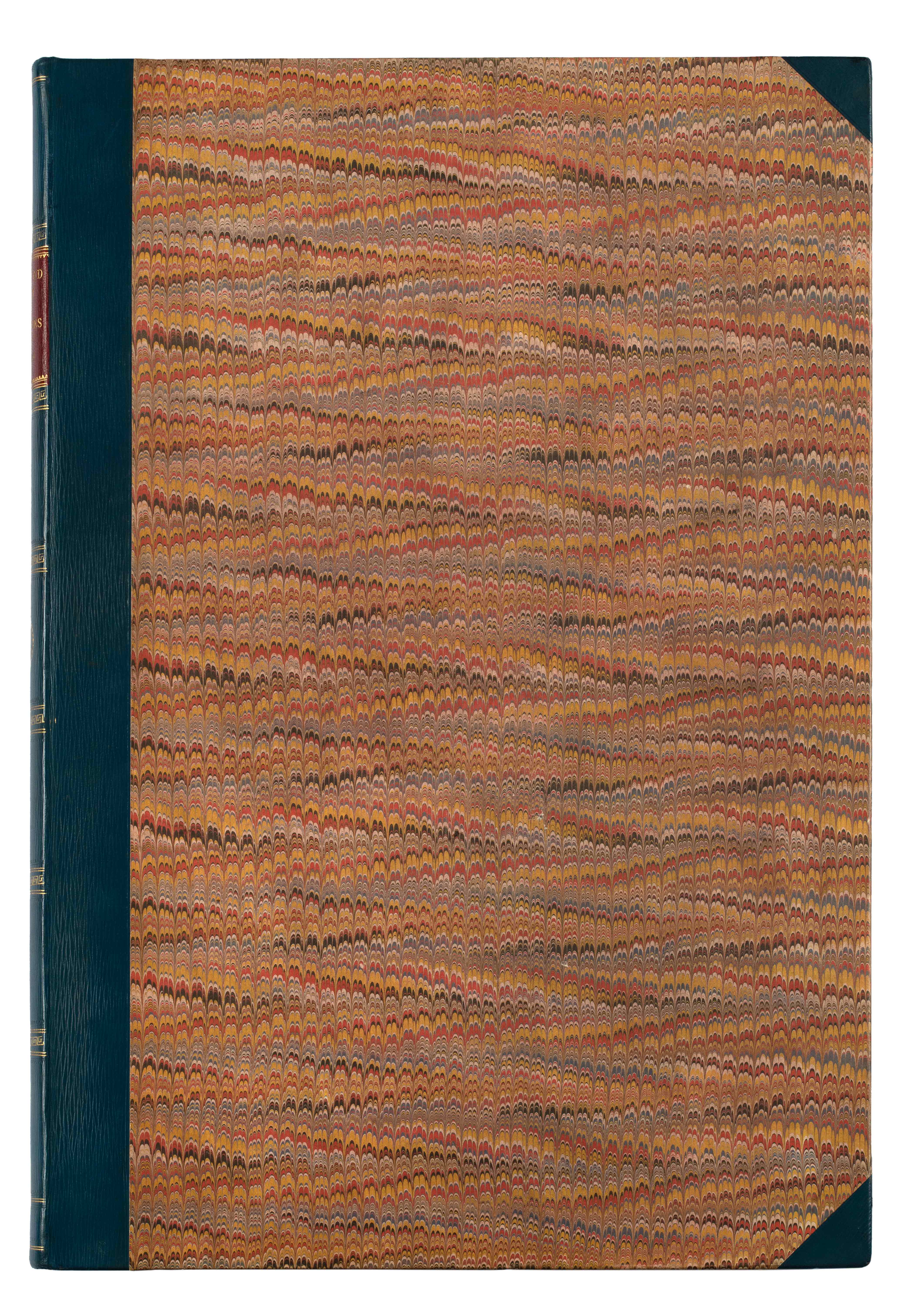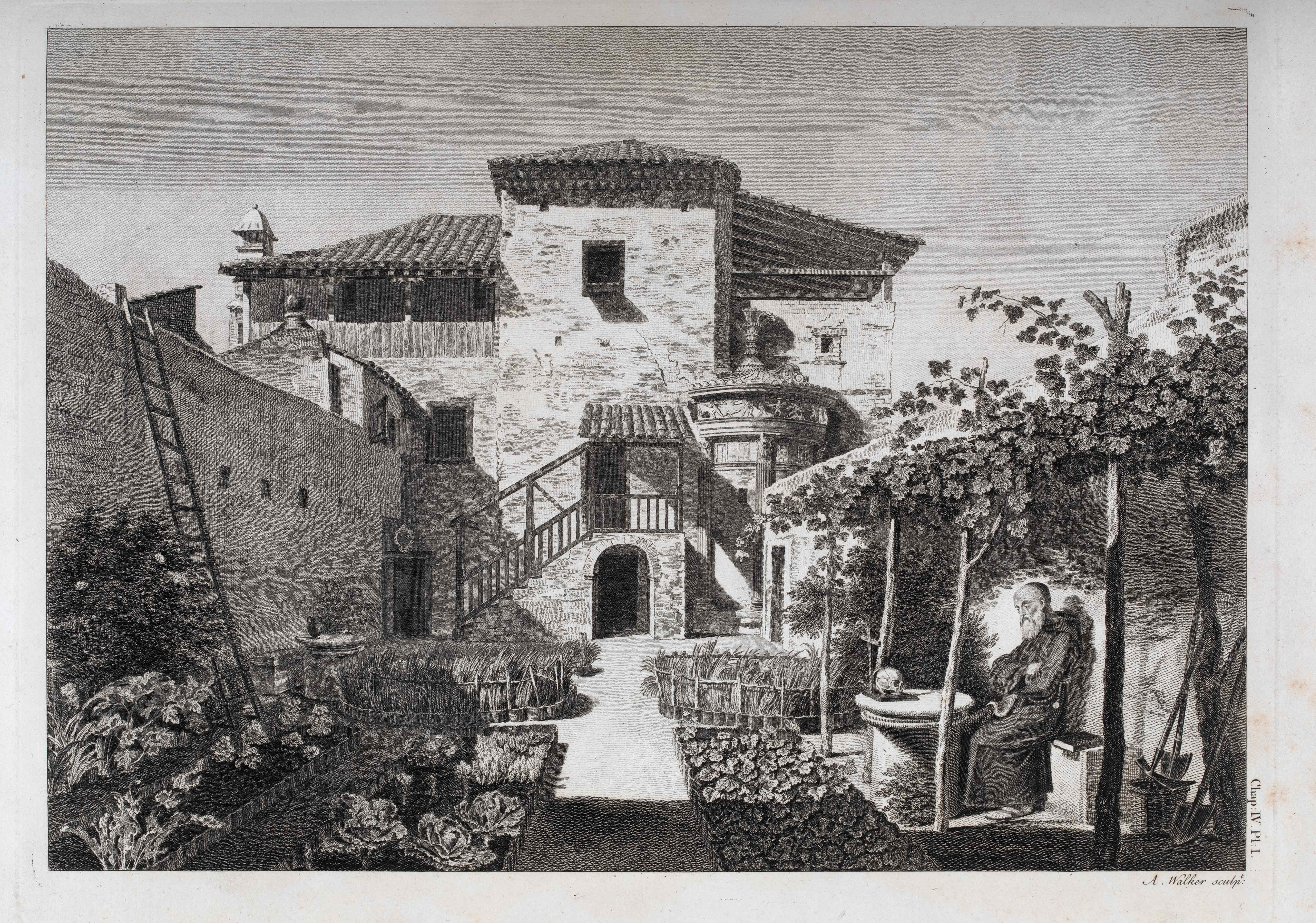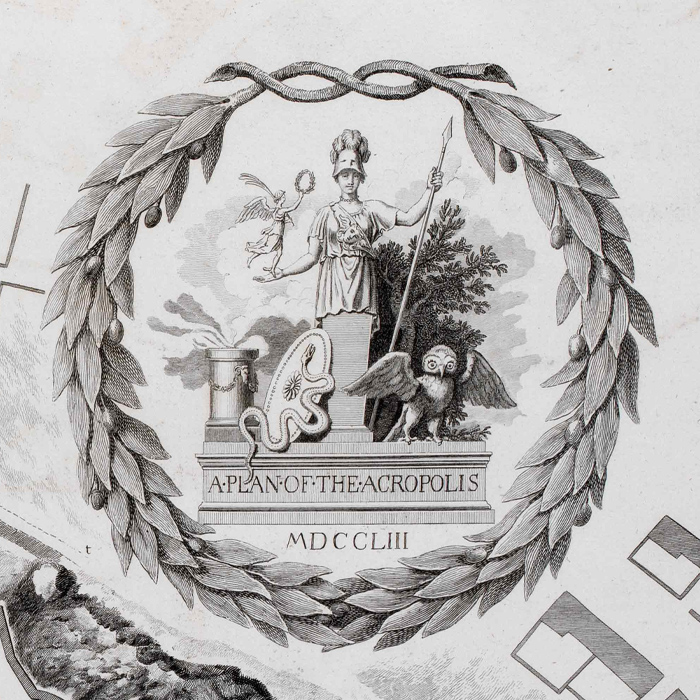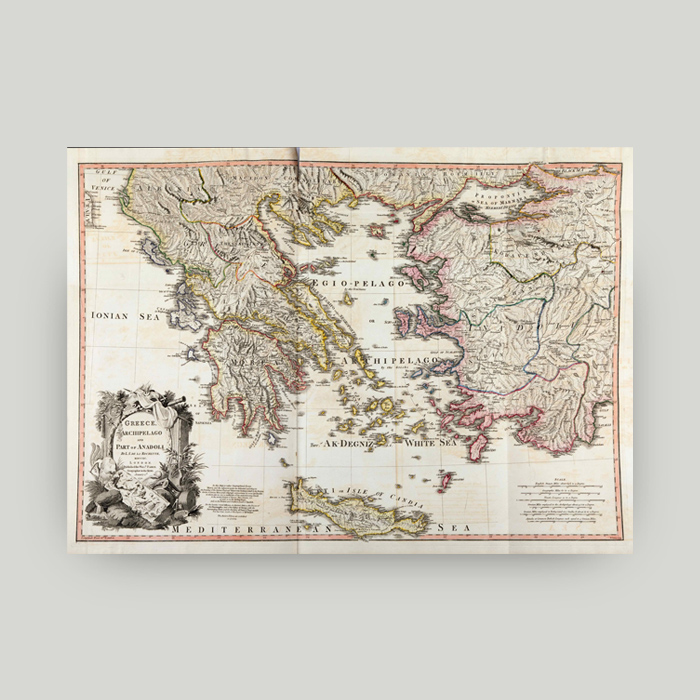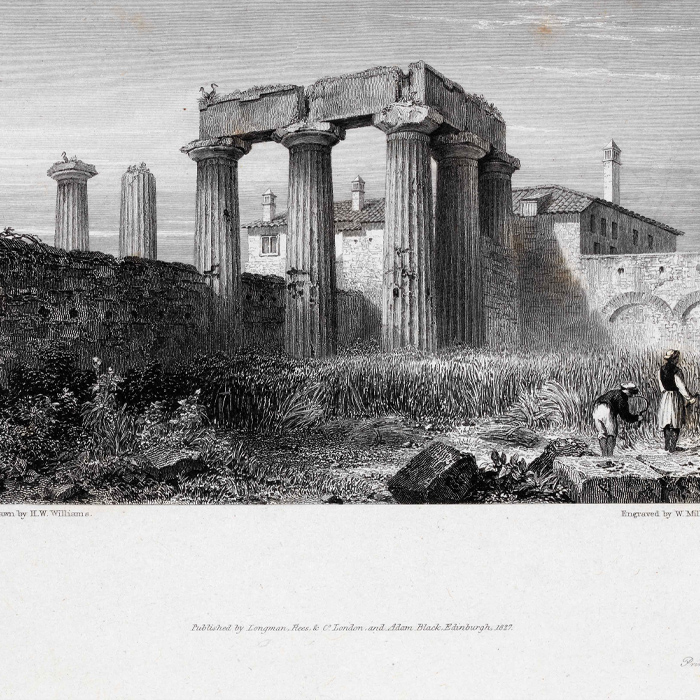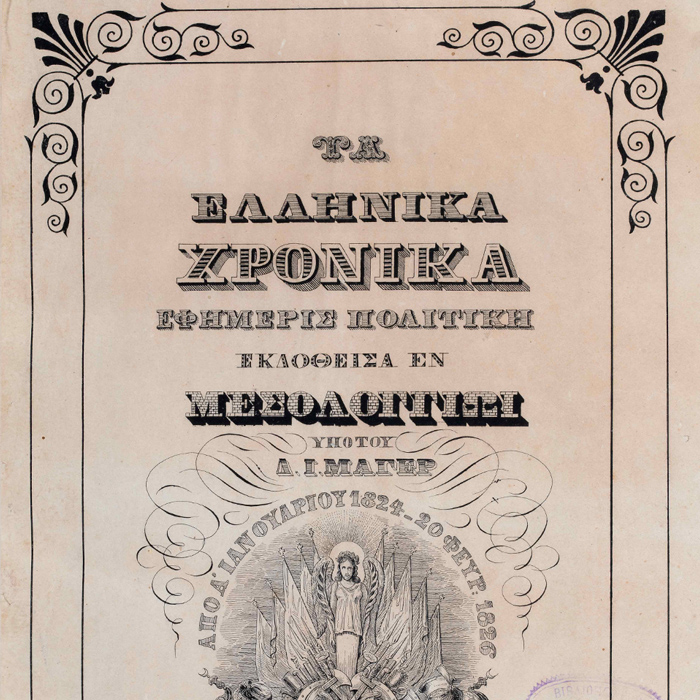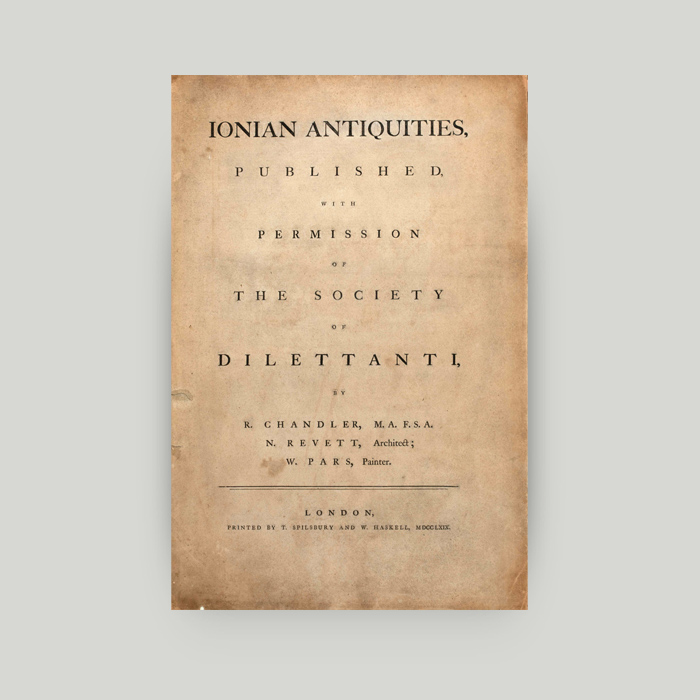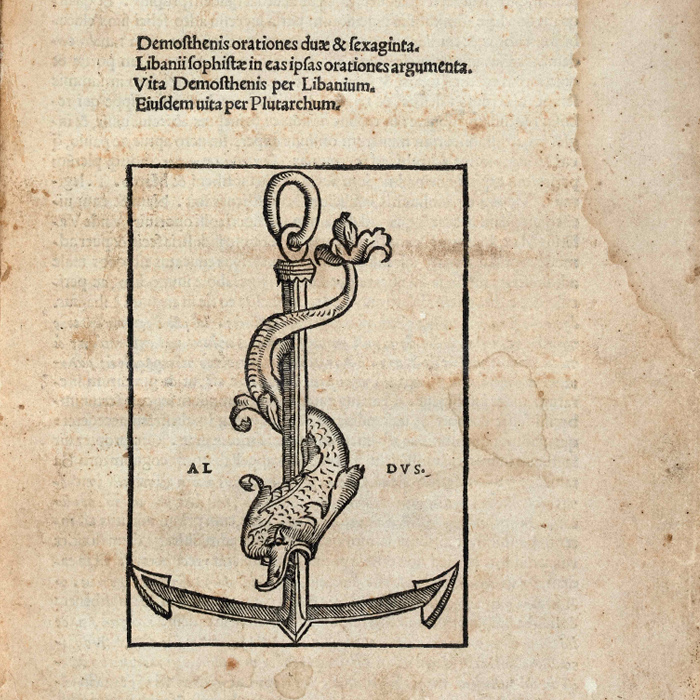The Antiquities of Athens. Volume the First
The book The Antiquities of Athens. Volume the First is the most iconic work of its time in reference to Ancient Greek architecture. It depicts the antiquities of Athens as they stood in the 18th century. It is a historical, archaeological expeditionary description with texts, tables and accurate drawings by the British architects James Stuart and Nicholas Revett.
External appearance and illustrations
The rare book The Antiquities of Athens. Volume the First is 37 cm (width) x 52 cm (height). It has a hard cover with decorative elements and is in near fine condition.
It includes accurate drawings and pictures of the antiquities in Athens as they stood in the 18th century. Each monument is presented with detailed commentary, prints with a panoramic view, elevations and cross-sections, as well as drawings of architectural details.
A historical description of the monuments
The book is a historical archaeological expeditionary description by the British James Stuart and Nicholas Revett.
Their work is rightfully considered the most iconic book of its time in reference to Ancient Greek architecture. This book essentially revived the interest in Classical Greece.
The Alpha Bank Library also holds volume 2 and volume 3 of the work.
A publication full of treasures
Volume the First of the book The Antiquities of Athens features monuments in the city of Athens:
- The Gate of Athena Archegetis at the entrance to the Roman Market.
- The Temple of Artemis Agrotera, at the banks of the River Ilissos, where the present-day area of Mets lies.
- The Horologion of Andronikos Kyrrhestes (Tower of the Winds) in Plaka.
- The Choragic Monument of Lysicrates (Lantern of Diogenes) in Plaka.
- Hadrian's Library in Monastiraki.
Volume the First also includes a detailed introduction about the authors, as well as the rationale behind this challenging and pioneering work.
A creative partnership
Architect and painter James Stuart (1713-1788) started painting at a very young age. He won awards and scholarships, while also doing odd jobs to make ends meet.
Architect and designer Nicholas Revett (1720-1804) met Stuart in 1742. In April 1748, after a hiking trip to Naples, they devised a proposal to publish an accurate description of the Athens antiquities. Their proposal was funded by the Society of Dilettanti in Rome.
The 2 architects and painters arrived in Greece in the fall of 1751 and stayed for approximately 3 years. They mainly worked in Attica, Corinth, Thessaloniki and Delphi. They did all their work on-site: Revett measured the monuments and Stuart drew them.
They depicted everything with great accuracy, and even proceeded to do some impromptu excavations. They also drew human figures in their natural environment.
A bitter rivalry
The 2 British, James Stuart and Nicholas Revett, were rivals of French historian and traveller Julien-David Le Roy, who studied the Greek antiquities during the same period. In fact, Le Roy managed to publish his own book, titled Les ruines les plus beaux de la Grèce 4 years ahead of the British.
Stuart and Revett criticised Le Roy’s book heavily. They claimed that his depictions were inaccurate and sketchy. After all, they had spent approximately 3 years in Athens, whereas Le Roy had only stayed for 3 months.
Sailing into Hellenism
The touring trend proved to be fundamental for the establishment of the modern Greek state. Hellenism, aside from a field of literary and philosophical research, became the means to revive the past. This was owing to:
- The increasingly frequent travels to Greece.
- The new archaeological discoveries.
- The quest for a more substantive and emotional relationship with the Greek present and past.
Time travellers
The 3-part chain past-present-future is very important when interpreting travel accounts. In travel accounts, one can find:
- The present of the past, in the descriptions of the ancient monuments that stand in space and time, and provide a reason for historical references or fictional representations of historical reality.
- The present of the present, in the descriptions of the landscapes, the people and the daily activities of travelling.
- The present of the future, in the appeals for liberation, nation-building or spiritual uplifting, depending on the traveller and the time of the trip.
The Alpha Bank Rare Book Collection is not open to the public.
However, you may visit the other collections of the Alpha Bank Library.
